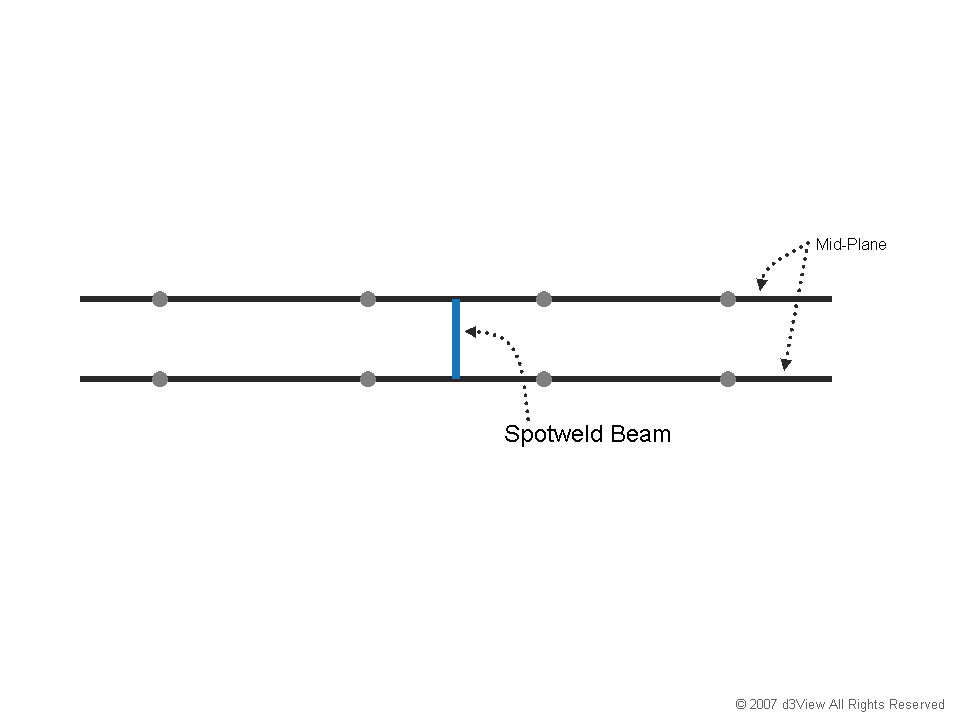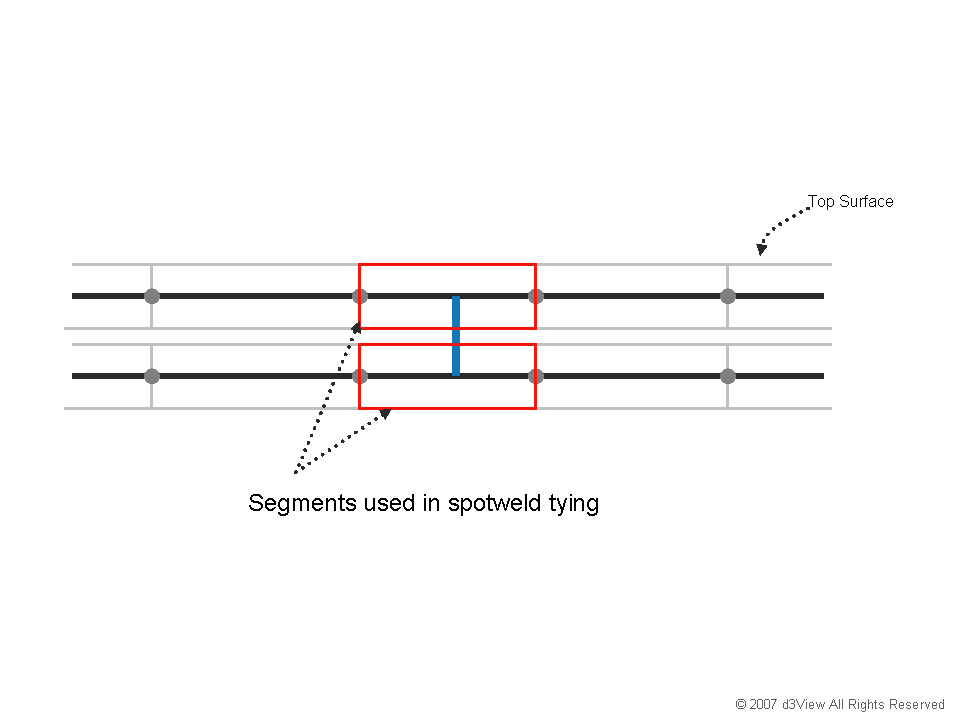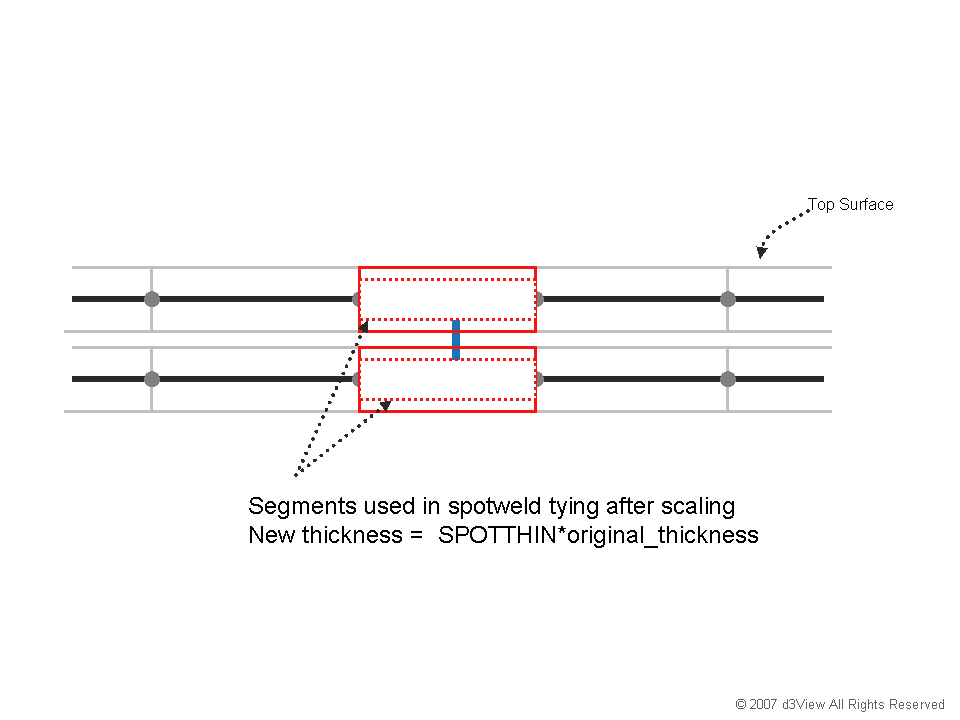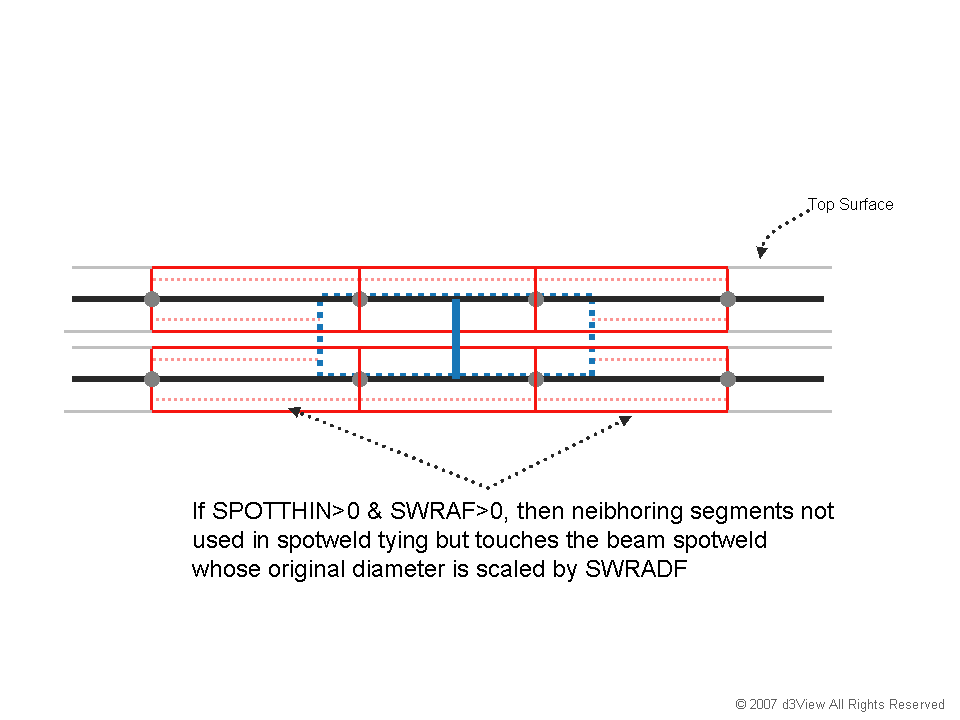In mesh independent deformable spotwelds (see here ), the actual spotwelds are represented using either beams or solids (single or cluster). The nodes of the beam or solid element representing the spotweld are then tied to the sheet metal using a tied interface (TIED_SHELL_EDGE_TO_SURFACE or TIED_NODES_TO_SURFACE). The forces experienced by the beam are the result of this tied interface and then the stiffness of the beam element. A simple spotweld modeling using beam element is shown below.
(Click to Enlarge)
In certain situations due to large deformations, the segments on sheet metal already used in the tied interface could interact with regular contact-impact treatment for example when using a global AUTOMATIC_SINGLE_SURFACE contact definitions in which the thickness offsets are always considered. The interference of the contact forces due to the offset with the beam forces could prematurely cause the beam or the solid element to fail or lead to incorrect forces in the weld element as shown below.
To overcome the influence of contact-impact forces with the actual tied interface, one can use SPOTTHIN parameter using *CONTROL_CONTACT which allows the user to scale ALL the segments already used in the tied interface by a factor of SPOTTHIN of the original segment thickness. This basically has the effect of simply not allowing the segments to interact due to small thickness. Since SPOTTHIN is a scale factor, it can carry a value of 0 (no scaling) to 1.0 (100% scaling) down of the original thickness. This is shown below.
Optionally, one can increase the area of the segment search that is to be “thinned” by increasing the radius of the beam or the solid using the parameter SWRADF. When SPOTTHIN is greater than zero and SWRADF is greater than zero, LS-DYNA loops through all the segments that are attached to the segment used to tie the beam to and scales those segments thickness as well. This is shown below.
(Click to Enlarge)


















